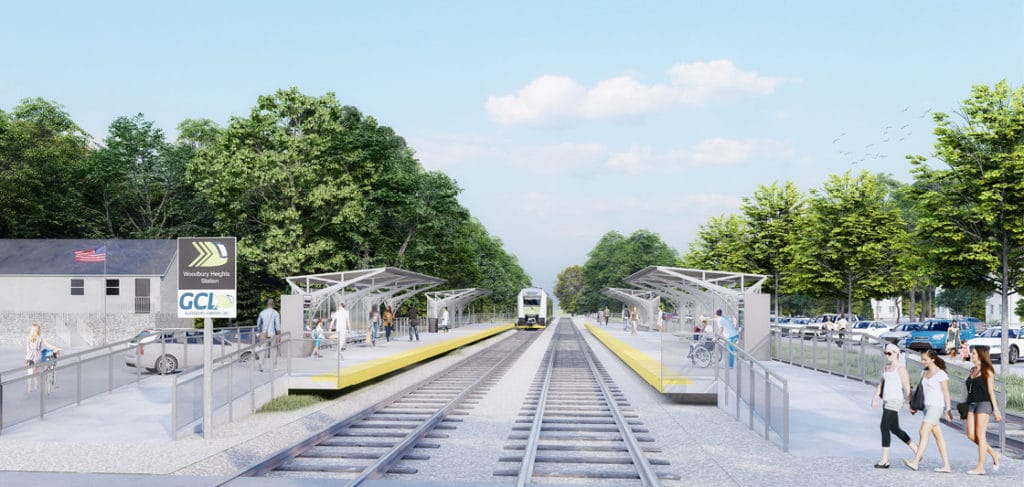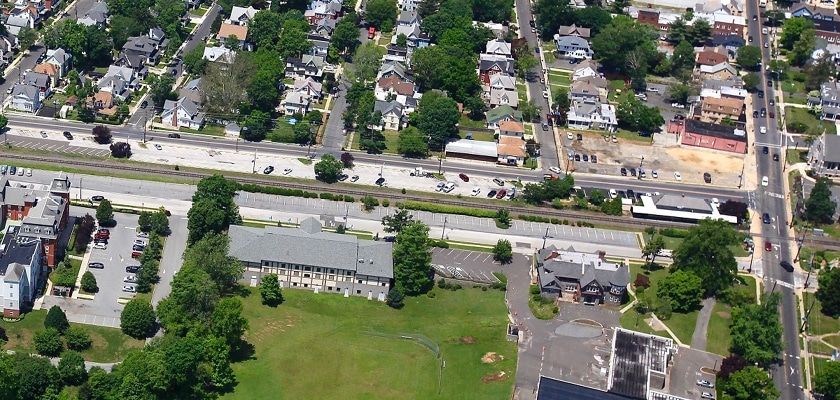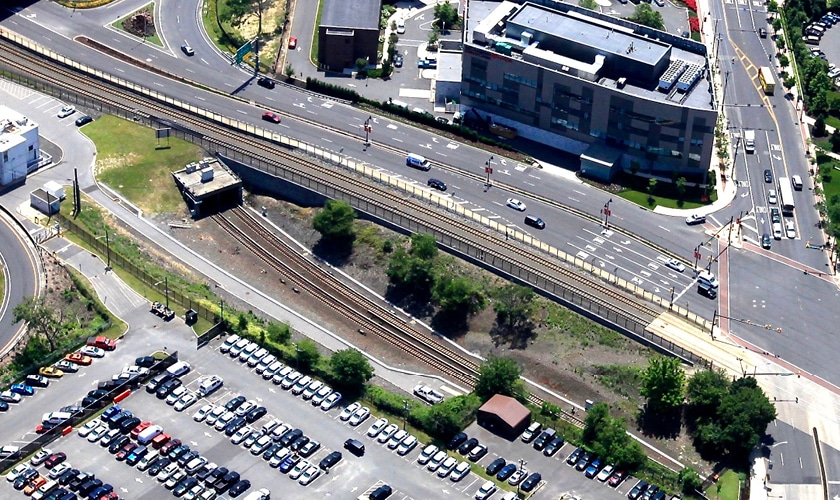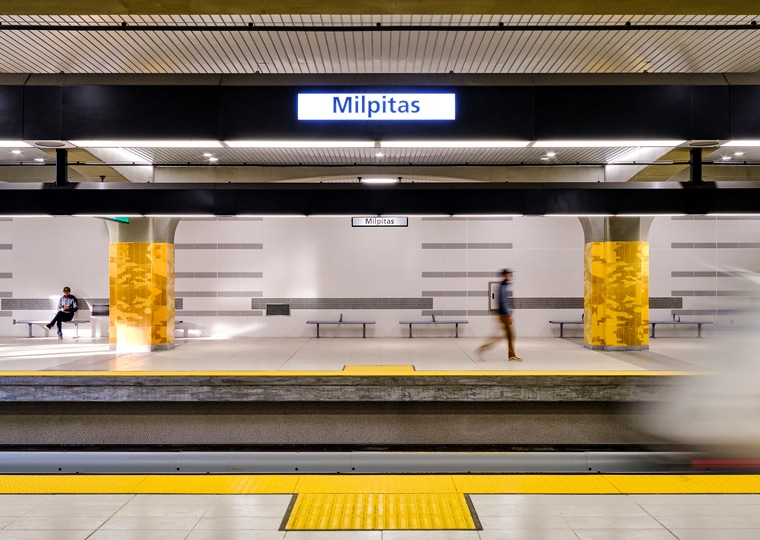
More than two decades ago, the communities of Camden and Gloucester County, NJ started the journey to expand the region’s transit infrastructure. The benefits of connecting Glassboro to Camden would be innumerable: attracting new businesses to the region, developing the community’s economic industries, and providing transportation to students, seniors, and commuters alike.
Now, 20 years later, that initial concept is nearing fruition. With plans to take a new 18-mile light rail service, known as the Glassboro to Camden Line (GCL), another step forward, the goal of improving access to 26 neighborhoods in Southern New Jersey is in sight.
STV’s work within this corridor dates back to 2003 when the firm was first contracted by the Delaware River Port Authority (DRPA) to perform a feasibility assessment for a prospective new mass transit line.
“At that time, I had just joined STV,” said John Manzoni, AICP, Principal, and Northeast planning director. “It’s been an incredible experience to see and be a part of the journey of this project, from working on the feasibility assessment and alternatives analysis to managing the Environmental Impact Statement and now continuing to advance the project into the future.”
Today, STV, in a joint venture with AECOM and contracted through a competitive selection process, is performing preliminary engineering and design services, including reporting, quality assurance, environmental investigation, risk management, and resilience planning and design. The GCL project is managed by the DRPA, with NJ TRANSIT and the South Jersey Transportation Authority (SJTA) as project partners.
Following STV’s alternatives analysis in the early 2000s, a light rail transit system between Glassboro and Camden was selected as the preferred option with overwhelming support from the communities during this assessment.

DRPA then selected STV on behalf of NJ TRANSIT to prepare the project’s Environmental Impact Study (EIS) and provide conceptual engineering services for the system, which will run primarily within the existing Conrail freight corridor and serve 26 neighborhoods in Southern New Jersey. STV completed the EIS in February of 2021. It proceeded to win the 2022 American Council of Civil Engineers (ACEC) New York gold award in the category studies, research and consulting engineering services as well as a Distinguished Award in the same category for ACEC New Jersey.
The sheer depth of research – which encompassed data from 26 neighborhoods, 42 intersections, and 65 acres of farmland and forests – required extensive study. The project team worked with various municipalities, stakeholders, nearby universities, and hospitals for feedback on proposed station areas to create the most equitable and beneficial outcomes.
In addition to supporting the development of the GCL, this project is expected to influence other potential projects that stand to be transformative for the Southern New Jersey area, including mixed-use development, new parks and playgrounds, pedestrian safety improvements, and other projects that benefit commuters.
“The GCL’s route will improve access to Southern New Jersey’s growing ‘meds-to-eds’ [medical and educational institutions] corridor for students, the elderly, hospital patients, and other transit-dependent populations,” said Manzoni. “This is the type of transit equity that allows all residents to access vital services and jobs across the region.”
As the firm begins its work with preliminary engineering and design services, its complexity is top of mind for the project team.
“I’ve been immersed in this project for nearly two years,” said Keith MacKenzie, P.E., vice president, and planning director. “As transit leaders, we need to be cognizant of all the nuances in this project.”
The firm is incorporating community concerns into its design plan, including reducing potentially adverse impacts to natural flora and fauna, impacts to traffic, and mitigating noise. Considerations for disabled riders, historically underserved riders, and elderly riders are also incorporated into the preliminary design.

“A major benefit of the firm having worked on this project for nearly two decades is that we’re very familiar with the challenges and potential solutions for the project site,” MacKenzie said. “Our EIS not only detailed the history of the region and its current challenges but looks to what future residents may require.”
To that end, the use of the existing Conrail Right-of-Way will restore passenger service to the existing rail corridor while minimizing the need to acquire more property as well as the subsequent adverse impacts to traffic within the corridor. Further, the proposed GCL will be built within an otherwise underutilized transportation corridor and is expected to support economic redevelopment consistent with local and state goals of preserving open spaces, reducing residential sprawl, minimizing pollution, and addressing potential habitat loss.
“The GCL is part of a broader plan to expand regional multimodal transportation, as well as spur additional development and infrastructure enhancements, throughout Southern New Jersey,” said MacKenzie. “That means working with existing community groups to ensure their needs are met, as well as attracting new businesses.”
While gathering data for the EIS, the project team prioritized public input during the development. Each community was solicited to provide feedback to the GCL proposal and the final EIS addresses any concerns raised by detailing the historical and cultural areas of importance along the corridor and outlining preservation details for the 11 historic districts in question.
As a result of STV’s ongoing work on these projects, the proposed GCL will provide 13 new transit stations: including four walk-up stations and nine park-and-ride stations with accommodations for bicyclists and pedestrians. The rail line is currently scheduled to open in 2028.
“The GCL is a critical step in improving accessibility throughout the region by offering reliable, comprehensive rail service to the region and equitable access to key destinations,” said Rich Amodei, President of Northeast Transportation. “To have contributed to the project at so many critical touchpoints is an incredible achievement. Our entire project team, particularly those who reside in Southern New Jersey, can be very proud of that.”





